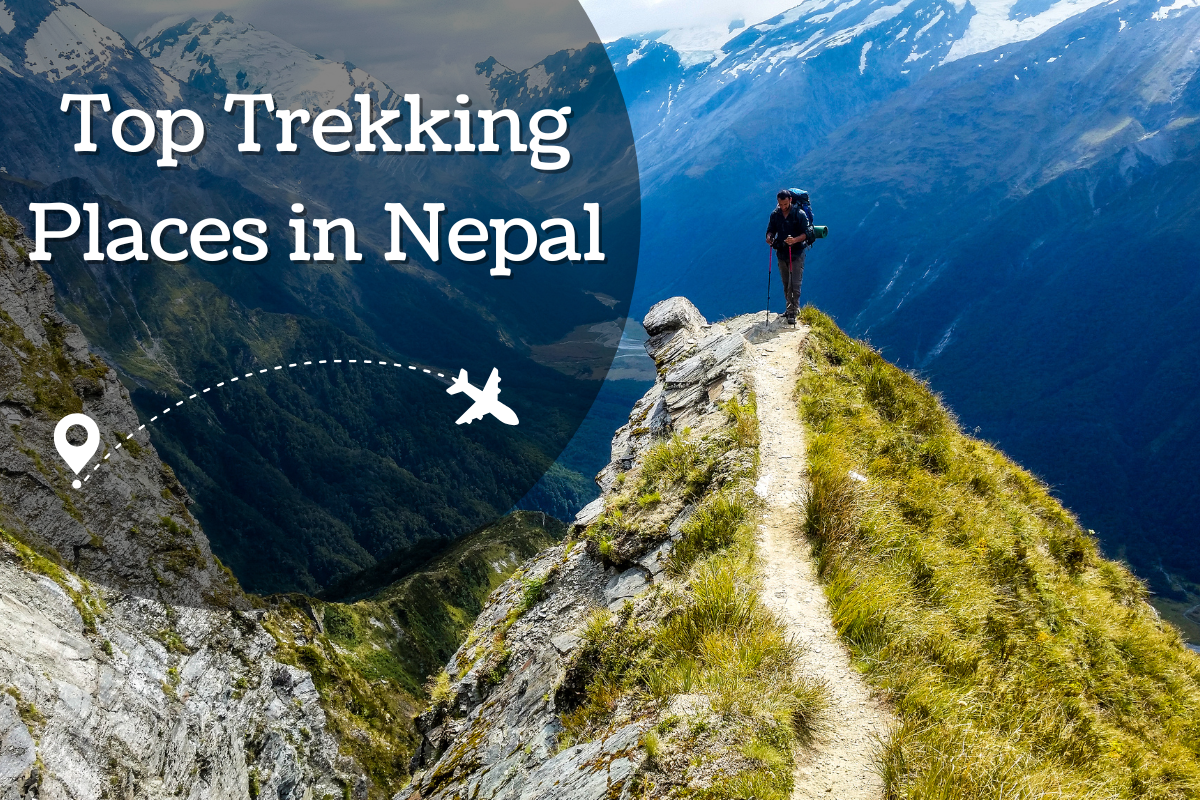Top Trekking Places in Nepal: A Journey Through the Himalayas
Top Trekking Places in Nepal, it's essential to be well-prepared, ensure proper permits, and consider the difficulty level based on your trekking experience. Always follow responsible trekking practices and respect the local culture and environment.

Nepal, nestled in the heart of the Himalayas, is a paradise for adventure seekers and nature lovers. Known as the land of Mount Everest, this small yet stunning country offers some of the most breathtaking trekking trails in the world. From towering peaks to serene valleys, Nepal’s diverse landscapes and rich culture make it a top destination for trekkers. Whether you're a beginner or an experienced hiker, here’s a guide to the top trekking places in Nepal that promise unforgettable experiences.
1. Everest Base Camp Trek
The Everest Base Camp Trek is arguably the most iconic trekking route in Nepal, drawing thousands of adventurers annually. This 12-14 day journey takes you to the foot of the world’s highest peak, Mount Everest (8,848 meters). Starting with a scenic flight to Lukla, the trail winds through Sherpa villages, lush forests, and rugged terrains. Highlights include the Tengboche Monastery, panoramic views of Ama Dablam, and the thrilling climb to Kala Patthar (5,545 meters) for sunrise vistas. Ideal for those seeking a blend of challenge and awe-inspiring beauty, this trek is a must-do. Everest Base Camp Trek is most difficult Treks to Do In Himalayas in 2025.
Best Time to Trek: March-May and September-November
Difficulty Level: Moderate to Challenging
2. Annapurna Base Camp Trek
For trekkers craving diverse landscapes, the Annapurna Base Camp Trek is a gem. Often called the ABC Trek, this 7-12 day adventure leads you to the base of Annapurna I (8,091 meters). The trail passes through terraced fields, Gurung villages, and rhododendron forests, culminating in a dramatic amphitheater of snow-capped peaks like Annapurna South and Machapuchare (Fishtail Mountain). The natural hot springs at Jhinu Danda are a bonus for soothing tired muscles.
Best Time to Trek: February-May and October-November
Difficulty Level: Moderate
3. Langtang Valley Trek
The Langtang Valley Trek offers a quieter alternative to the more crowded Everest and Annapurna routes. Located just north of Kathmandu, this 7-10 day trek takes you through the pristine Langtang National Park. You’ll encounter Tamang villages, yak pastures, and stunning views of Langtang Lirung (7,227 meters). The trail also holds emotional significance, as the region rebuilds after the 2015 earthquake, showcasing the resilience of its people.
Best Time to Trek: March-May and September-November
Difficulty Level: Easy to Moderate
4. Manaslu Circuit Trek
For those seeking an off-the-beaten-path adventure, the Manaslu Circuit Trek is a hidden treasure. This 14-18 day trek circles Mount Manaslu (8,163 meters), the eighth-highest peak in the world. The route offers a mix of challenging ascents, like the Larkya La Pass (5,160 meters), and cultural immersion in remote Tibetan-influenced villages. With fewer trekkers and unspoiled scenery, it’s perfect for solitude seekers.
Best Time to Trek: March-April and October-November
Difficulty Level: Challenging
5. Upper Mustang Trek
The Upper Mustang Trek is a journey into Nepal’s mystical “Forbidden Kingdom.” This 10-14 day trek takes you to a remote region near the Tibetan border, known for its arid landscapes, ancient monasteries, and cave dwellings. The walled city of Lo Manthang, with its medieval charm, is a highlight. Unlike other treks, Upper Mustang offers a unique desert-like terrain, contrasting with Nepal’s usual lush greenery.
Best Time to Trek: May-September (monsoon-friendly due to rain shadow)
Difficulty Level: Moderate
6. Ghorepani Poon Hill Trek
Perfect for beginners or those short on time, the Ghorepani Poon Hill Trek is a 4-5 day hike in the Annapurna region. The trek’s highlight is the sunrise view from Poon Hill (3,210 meters), where you’ll witness a golden panorama of Dhaulagiri, Annapurna, and Machapuchare. The trail meanders through charming villages and blooming rhododendron forests, making it a photographer’s delight.
Best Time to Trek: March-May and October-December
Difficulty Level: Easy
Why Trek in Nepal?
Nepal’s trekking routes stand out for their unparalleled natural beauty, cultural richness, and accessibility. Home to eight of the world’s 14 highest peaks, the country offers trails for all skill levels. The warm hospitality of local communities, coupled with affordable teahouse stays, enhances the experience. Whether you’re chasing Himalayan vistas or seeking spiritual solace, Nepal delivers.
Tips for Trekking in Nepal
- Preparation: Train physically, pack light, and carry essentials like trekking poles, layers, and a first-aid kit.
- Permits: Obtain necessary permits (e.g., TIMS card, restricted area permits for Mustang and Manaslu).
- Guides: Consider hiring a local guide or porter for safety and to support the local economy.
- Altitude Awareness: Acclimatize properly to avoid altitude sickness, especially on high-altitude treks like Everest and Manaslu.
Final Thoughts
Nepal’s trekking destinations are more than just trails—they’re gateways to adventure, culture, and self-discovery. From the world-famous Everest Base Camp to the serene Langtang Valley, each route offers a unique slice of Himalayan magic. Plan your trek based on your fitness level and time, and let Nepal’s mountains leave you spellbound. Ready to lace up your boots? The Himalayas are calling!





